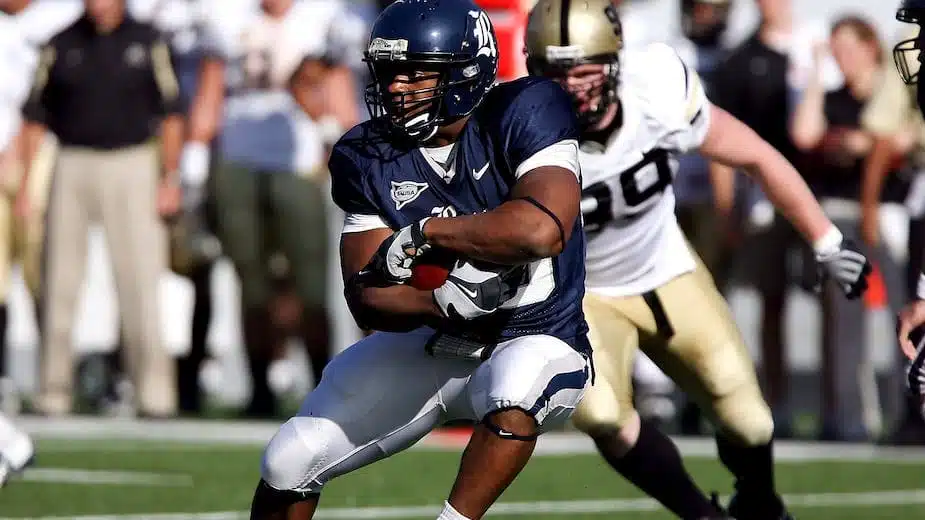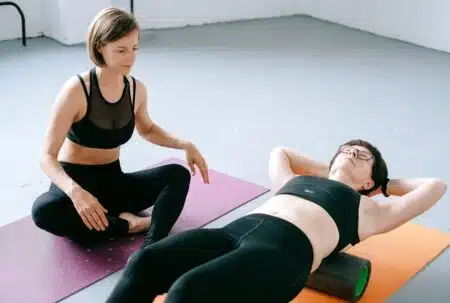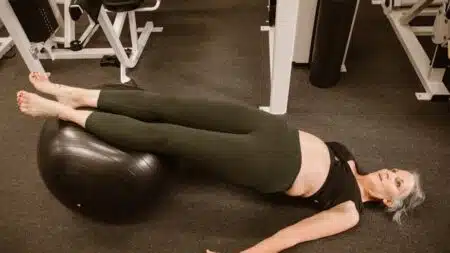If you’re an athlete who experiences chronic groin pain that just won’t go away, you may have developed an insidious injury known as a sports hernia. Despite its name, a sports hernia is not actually a true hernia. Rather, it refers to a tear or strain in the muscles or tendons of the lower abdomen and groin area.
Sports hernias can be tricky to diagnose properly and frustrating to live with. But with the right treatment plan from a physical therapist specializing in sports injuries, you can get back to competing at your highest level.
Read on to learn all about what causes sports hernias, how to identify the symptoms, and the most up-to-date treatments available from top experts in the field of sports medicine and physical therapy.
What is a Sports Hernia?
A sports hernia goes by several other names including athletic pubalgia, sportsman’s hernia, footballer’s hernia, hockey hernia, and Gilmore’s Groin. But no matter what you call it, a sports hernia refers to strain and microtears in muscles and tendons around the lower abdomen and groin area rather than an actual protrusion of tissue through the abdominal wall.
The oblique muscles in the lower abdomen are commonly affected as are the tendons attaching to the pubic bone. Anything requiring repetitive and forceful twisting motions can place excessive load on this region and lead to injury over time.
Sports that notoriously lead to athletic pubalgia include hockey, soccer, football, wrestling, rugby, skiing, tennis, hurdling, and basketball among others. Males between ages 26-28 make up the majority of sports hernia cases since this group comprises most professional and serious amateur athletes.
Differentiating Sports Hernia from Common Hernias
So if it’s not a true hernia, how does athletic pubalgia differ from more well-known abdominal hernias like inguinal or hiatal hernias?
The distinguishing factor lies in the underlying anatomy. Hernias involve a protrusion or rupture of tissue through the muscle or fascia wall. For example, abdominal contents may push through a weakened area of the abdominal muscles leading to the characteristic bulge right under the skin.
In contrast, a sports hernia refers to torn muscle and connective tissue—no bulge required. As such, sports hernias do not display the classic signs of bowel or abdominal contents pushing through. There may be some confusion because chronic groin pain can accompany true abdominal wall hernias as well.
What Causes this Common Sports Injury?
Sports hernias arise from sudden forceful twisting of the torso combined with weakness in the abdominal musculature. Common mechanisms leading to injury include:
- Forceful repetitive hip flexion motions like kicking, twisting, jumping
- Intense situps and hip flexor exercises
- Muscular imbalances between hip and core muscles
- Inadequate flexibility through the groin and hip regions
Over months to years of play, these factors cause microtears and weakness in the oblique abdominals near their attachments. Eventually tears coalesce leading to the consistent pain that defines a sports hernia. Activities requiring sudden stops, starts, lunges, and direction changes will aggravate these repetitive motion injuries.
Who Gets Sports Hernias?
By far athletes in sports demanding lots of hip torque and pelvic cuts suffer the most sports hernias. Forwards and midfielders in soccer, hockey centers, football running backs and linebackers display the highest rates of athletic pubalgia.
In one study following elite soccer players over 13 years, 5% experienced a severe groin injury. Forwards incurred the most injuries as their position requires the sudden stops/starts and kicks placing the most torque across the hips and pelvis.
Interestingly, female athletes get sports hernias far less often than men, likely due to differences in hip anatomy and sports participation rates. Non-athletes can also occasionally sustain athletic pubalgia although the term “sports hernia” should really be reserved for athlete injuries.
Identifying Key Sports Hernia Symptoms
Catching sports hernias early provides the best prognosis since advanced injuries often require surgical intervention. Be on alert for these common patterns:
- Burning, dull, or achy pain in the lower abdomen and groin region
- Difficulty pinpointing exact origin of pain
- Pain descending into inner thigh and genital region
- Pain worsening with cough/sneeze/situp
- Pain flaring during activity and easing with rest
Note the insidious onset in the majority of cases—rarely is there sudden intense pain at the time of injury. Instead niggling chronic groin pain gradually worsens over seasons of play. Morning and rest pain indicate advanced injury with muscle compensation higher up leading to lumbar spine irritation.
Getting the Right Diagnosis
Since athletic pubalgia symptoms mimic other pelvic conditions, getting the correct diagnosis is critical before embarking on therapy. Hip arthritis, pelvic stress fractures, nerve entrapments, rectal/testicular disorders, and true hernias can all cause similar groin pain patterns. Often multiple imaging tests prove necessary.
First comes a thorough history and physical by a sports physician or orthopedic doctor familiar with athletic injuries. Palpation of the groin triggers exquisite pain in those with sports hernias.
Resisted sit ups also reproduce symptoms– essentially exacerbating microtears. Particular attention is directed toward hip range of motion and strength. Leg length discrepancies correlate with increased rate of athletic pubalgia as well.
In terms of imaging, an MRI localizes the torn muscles and connective tissue responsible for the chronic groin pain. Ultrasound examines hip bursae and the abdominal wall with dynamic testing to rule out true bulging hernias. Xrays show bone changes consistent with chronic shear injuries and arthritic conditions.
A CT better delineates bony pathology. And a diagnostic injection of numbing medication into the hip flexor region helps confirm the source of pain.
Elements of Effective Sports Hernia Treatment
In the early stages of a mild athletic pubalgia, rest and ice may settle symptoms. But advancing to formal therapy quickly produces superior results. Physical therapists first focus on flexibility through the hips and thighs via manual techniques and personalized stretches.
Next core strengthen serves to share athletic loads across the kinetic chain rather than over-relying on strained groin attachments. Open and closed chain exercises progress gradually under careful supervision.
If pain persists despite dedicated PT, corticosteroid injections often reduce inflammation allowing participation in rehab. For full tears or chronic cases, surgery reinforces compromised tissue. Both open and laparoscopic techniques show good outcomes. Surgery requires extensive post-op rehab to restore flexibility and strength.
Can Athletes Prevent Sports Hernias in the First Place?
Prevention centers around maintaining balance between hip and abdominal strength coupled with full functional range of motion. A common risk factor includes femoral acetabular impingement (FAI) where bone deformities degrade hip mobility over time.
Surgical hip repair coupled with disciplined preventative core and hip strengthening allows return to sport without recurrence. Learning proper hip hinge biomechanics provides lasting benefit.
Physical therapists also instruct at-risk athletes in proper pelvic positioning during activity. Techniques to limit over-rotation and shear can alleviate undue strain. Stretches keeps muscles flexible and pliable through long seasons while devices like hernia belts provide compression around affected areas.
The Long Road Back from Sports Hernia Injury
Unfortunately athletic pubalgia injuries require lengthy recovery – generally at least 6-8 weeks to regain pain free function after conservative care. If debridement or repair surgery enters the equation, athletes still need upfront rest while post surgical strengthening takes at least 3 months.
The big caveat exists in recurrence rates. Compared to hamstring strains or shoulder dislocations, sports hernias reform at a higher rate if athletes return too quickly or without fully correcting risk factors.
Upwards of 20% experience some sort of reinjury or reaggravation at a year if therapists clear them prematurely for explosive rotation and pounding hip flexion sports. Prevention truly centers aroundlifetime habit change.
Keys for Sports Hernia Recovery
In review, properly diagnosing and managing sports hernias requires patience along with customized hip/core rehab under the direction of experts in athletic medicine. Since causes link to faulty mechanics and loading, quick fixes fail to provide lasting relief.
But by identifying your unique pain generators early then correcting the imbalance through personalized physical therapy, you as an athlete can absolutely expect to eventually overcome activity-limiting groin injuries once and for all.
The road back to legitimate performance means gaining flexibility and motor control throughout your entire lumbopelvic complex. Don’t rush the process at the expense of repeat agony months down the road. Commit to prevention and you’ll unlock potential limited by chronic groin issues.
Choose physical therapists attuned to the demands of your sport who incorporate expertise in movement dysfunction. Getting back on the field at your highest level makes the diligence all worth it.



